 |
The History of Council Housing |
  |
|
|
2 Before Council Housing
|
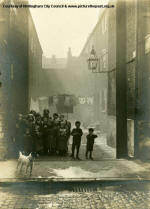 |
Britainís cities began to expand on a large scale during the nineteenth century largely due to
workers and labourers from the surrounding countryside flocking to the
city seeking work during the years of industrialisation and growing opportunity
for employment. House building at this time was largely done by profit-seeking
private builders. Mostly they built long streets of terraced houses and
these new communities were largely unplanned. The
large majority of the population rented privately, from a modest room in
a house to a grand residence in the country. Mainly due to the fact that
borrowing and mortgages had not become commonplace, only the richest
people could afford to own their own homes.
|
 |
| Problems of poor housing conditions, mostly in inner
city areas, grew steadily
as city populations increased. With the development of high density
unorganised neighbourhoods, overcrowding became commonplace. In the poorer areas of cities
families could be found huddled in dark and unsanitary courts of squalid
housing often without facilities and natural light. Some of the worst
conditions were found in London, Glasgow, Liverpool and Newcastle. Concerns began to grow across the country about public health
arguably this was stimulated by a fear among the middle classes of
infectious disease spreading from the overcrowded and insanitary working
class housing into where they lived. There was pressure on the Government to begin looking at housing
issues and they were slowly persuaded to intervene. It was argued that new private housing was too expensive for most working
class families and of these houses, most were built in the suburbs which
were too expensive and distant from their sites of employment. |
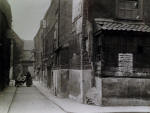 |
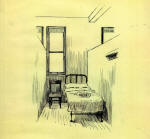 |
Government begun to
pass various Acts mainly aimed to address the worst areas of housing
unfit for habitation or to improve or demolish existing houses. The most
important Act came in 1890: the ĎHousing for the Working Classes Actí. Efforts
was made to build and regulate private Common Lodging Houses that
catered for those in the most need, like the one purpose built in
Bristol illustrated on the right. They provided accommodation mostly for single
men in little dormitories as seen left. Other private Lodging Houses
like the 'Britts Central Home for Men Only' (below) opened up
providing basic beds for some of the poorest people in society and were
mostly run by charitable trusts or voluntary organisations. There was
also a movement for improved housing from some independent organisations
such as the Bristol Industrial Dwellings Company who pioneered for
housing the poorer people in Bristol and succeeded in erecting three
blocks of flats containing 80 tenements in the area of Jacobís Wells. |
 |
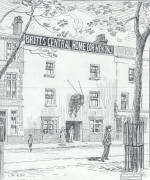 |
Up until 1919, although councils did have the power to
build houses, most had had little involvement. Some corporation family
housing was provided, mainly in London, Liverpool and Glasgow, often to rehouse
those displaced as the result of street improvement schemes. Londonís local councils
had began to build
houses in the 1890s, one of its earliest schemes was the inner city Millbank
Estate in Westminster completed in 1902. The estate provided affordable rented
flats for 4,430 people on a site that had previously been the notorious Millbank
prison. However in almost all areas, efforts to clear slum areas exceeded all
house construction, effectively reducing the number of low cost housing
available. Most pre-1919 corporation housing was built cheaply taking
the form of high density tenement blocks of flats with small rooms and
limited facilities including shared kitchen and toilets and no running
hot water. Typical rents where high which was no comfort to those on low
and irregular wages and thus did not provide housing for the very poor.
One reason for high rents was that before 1919 no corporation dwellings
received subsidy from central government. It wasnít until after the
First World War that housing became a real priority. |
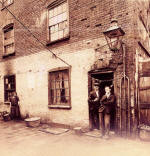 |
|
|